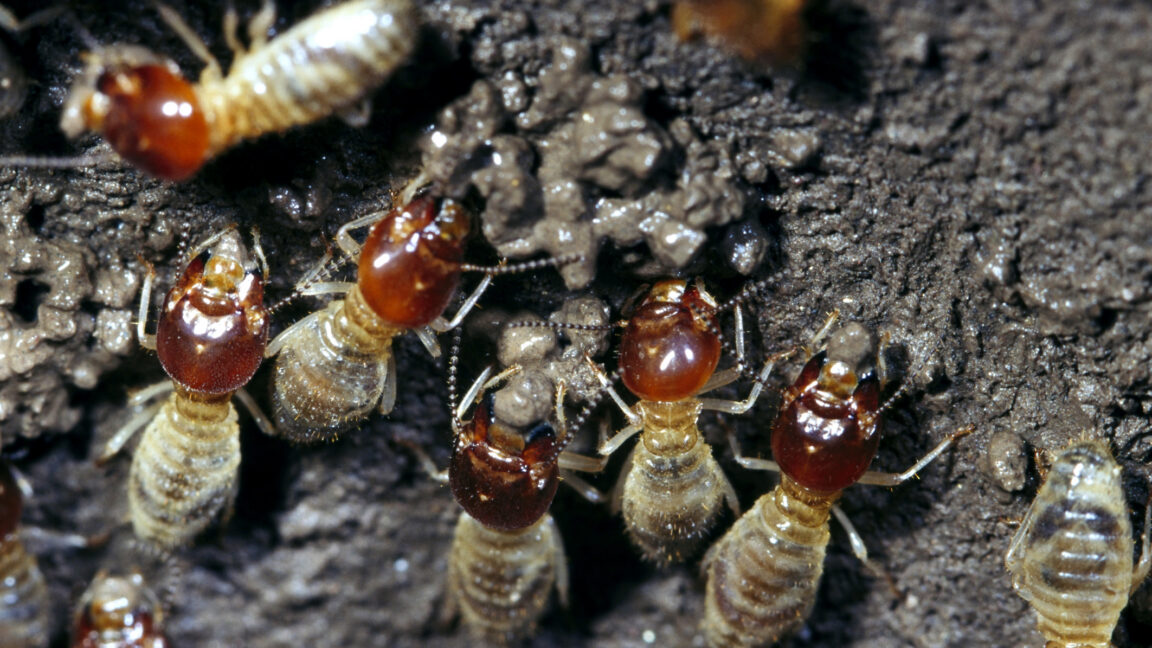Science
Termite Farmers Innovate Weed Control Tactics for Fungal Gardens

Research led by Rhitoban Raychoudhury at the Indian Institute of Science Education has revealed that the termite species Odontotermes obesus employs complex and adaptable strategies to manage weed infestations in their fungal gardens. This innovative approach challenges previous assumptions about the limitations of termite behavior in agricultural practices.
Advanced Gardening Practices
Unlike traditional agriculturalists, termites face unique challenges in their underground ecosystems, particularly from weeds like Pseudoxylaria, which threaten the fungi they cultivate, known as Termitomyces. Raychoudhury’s findings, published in a 2025 issue of Science, suggest that termites possess sophisticated responses to weed threats, rather than a fixed set of behaviors.
Termites, which are effectively blind, compensate for their lack of sight through heightened olfactory and tactile senses. These adaptations allow them to detect environmental changes, including weed growth. The research team designed experiments to observe how these termites respond to infestations in controlled settings, utilizing autoclaved soil from termite mounds and various combinations of infected and uninfected fungus combs.
Experimental Insights into Termite Behavior
In their initial experiment, the researchers simulated early-stage Pseudoxylaria infestations. The termites exhibited a range of behaviors, primarily removing the weed from the comb and burying it in the soil. This approach proved effective, as it contained the infection in 94 percent of the samples observed.
As the experiments progressed, the team introduced more severe infestations. When confronted with heavily infected combs, termites opted not to retrieve them, indicating an ability to assess the viability of their resources. Instead, they covered the infected areas with soil, a decision that highlights the balance they must strike between preserving their crops and managing space within their colonies.
Another critical aspect of the research involved understanding how termites utilize the soil they bury infected combs in. The findings revealed that the soil functions effectively as a form of pest control, containing microbes that inhibit fungal growth without destroying the weed entirely. This strategy prevents the weed from spreading while allowing it to survive, which may be advantageous given the termites’ reliance on fungi for food.
Raychoudhury noted that the microbes responsible for this fungistatic effect originate from the termites themselves, suggesting a sophisticated internal mechanism for managing their gardens. The termites create small soil clumps, known as boluses, which they apply strategically to the affected areas.
Future Research Directions
The study opens several avenues for further investigation, particularly regarding the microbes involved in weed control. Understanding whether all gut microbes are essential for this process or if only specific ones play a significant role could provide valuable insights into termite biology and their agricultural practices.
Raychoudhury expressed interest in exploring how termites handle various pathogens beyond just weeds. “We would like to use other pathogens and see how termites handle them,” he stated, emphasizing the need for continued research into the complex relationships within termite colonies.
As termite colonies thrive in environments conducive to microbial growth, the implications of this research extend beyond entomology. The findings may contribute to broader conversations about sustainable agricultural practices and the fascinating ways in which different species adapt to challenges in their environments.
-

 Education3 months ago
Education3 months agoBrandon University’s Failed $5 Million Project Sparks Oversight Review
-

 Science4 months ago
Science4 months agoMicrosoft Confirms U.S. Law Overrules Canadian Data Sovereignty
-

 Lifestyle3 months ago
Lifestyle3 months agoWinnipeg Celebrates Culinary Creativity During Le Burger Week 2025
-

 Health4 months ago
Health4 months agoMontreal’s Groupe Marcelle Leads Canadian Cosmetic Industry Growth
-

 Science4 months ago
Science4 months agoTech Innovator Amandipp Singh Transforms Hiring for Disabled
-

 Technology3 months ago
Technology3 months agoDragon Ball: Sparking! Zero Launching on Switch and Switch 2 This November
-

 Education3 months ago
Education3 months agoRed River College Launches New Programs to Address Industry Needs
-

 Technology4 months ago
Technology4 months agoGoogle Pixel 10 Pro Fold Specs Unveiled Ahead of Launch
-

 Business3 months ago
Business3 months agoRocket Lab Reports Strong Q2 2025 Revenue Growth and Future Plans
-

 Technology2 months ago
Technology2 months agoDiscord Faces Serious Security Breach Affecting Millions
-

 Education3 months ago
Education3 months agoAlberta Teachers’ Strike: Potential Impacts on Students and Families
-

 Science3 months ago
Science3 months agoChina’s Wukong Spacesuit Sets New Standard for AI in Space
-

 Education3 months ago
Education3 months agoNew SĆIȺNEW̱ SṮEȽIṮḴEȽ Elementary Opens in Langford for 2025/2026 Year
-

 Technology4 months ago
Technology4 months agoWorld of Warcraft Players Buzz Over 19-Quest Bee Challenge
-

 Business4 months ago
Business4 months agoNew Estimates Reveal ChatGPT-5 Energy Use Could Soar
-

 Business3 months ago
Business3 months agoDawson City Residents Rally Around Buy Canadian Movement
-

 Technology2 months ago
Technology2 months agoHuawei MatePad 12X Redefines Tablet Experience for Professionals
-

 Business3 months ago
Business3 months agoBNA Brewing to Open New Bowling Alley in Downtown Penticton
-

 Technology4 months ago
Technology4 months agoFuture Entertainment Launches DDoD with Gameplay Trailer Showcase
-

 Technology4 months ago
Technology4 months agoGlobal Launch of Ragnarok M: Classic Set for September 3, 2025
-

 Technology4 months ago
Technology4 months agoInnovative 140W GaN Travel Adapter Combines Power and Convenience
-

 Science4 months ago
Science4 months agoXi Labs Innovates with New AI Operating System Set for 2025 Launch
-

 Top Stories2 months ago
Top Stories2 months agoBlue Jays Shift José Berríos to Bullpen Ahead of Playoffs
-

 Technology4 months ago
Technology4 months agoNew IDR01 Smart Ring Offers Advanced Sports Tracking for $169










